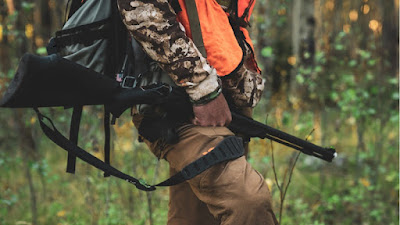 |
| source: themeateater.com |
Every moment counts when you’re out in the wild and so does the gear you carry. From ammunition to tools that aid in aim, having the right shotgun essentials can make a lot of difference in your field experience. With the right items at your side, you’ll be prepared for anything the terrain throws your way, enhancing your performance and your overall hunting experience.
Ammunition
 |
| source: isotunes.eu |
Ammunition is one of the most crucial items for any hunter in the field. Understanding shotgun gauges, especially the popular 12 and 20 gauge shot gun ammo, will help you choose the right ammunition for your firearm. Gauge refers to the diameter of the bore and it’s determined by the number of lead balls of that size that collectively weigh one pound. For instance, 12-gauge shotgun ammo has a larger bore than a 20-gauge because it only takes 12 lead balls of that size to make up a pound, whereas it would take 20 smaller balls for a 20-gauge. Meanwhile, a .410 bore, often mistakenly referred to as a "gauge," stands apart, measured instead by its exact bore diameter of .410 inches.
When selecting shot gun ammo, you should match the gauge of the ammunition with your shotgun to avoid dangerous situations. Using the wrong gauge can cause smaller shells to slide down the barrel of a larger-gauge firearm, potentially causing a blockage and serious risk upon firing.
What are the Different Kinds of Shotgun Ammo?
Most options fall into one of three categories: birdshot, buckshot, and slugs. Here’s a quick guide to each type and their uses:
- Birdshot: These shells contain small pellets that often range from sizes like #9 (.08 inches) to T (.20 inches). Birdshot shotgun ammunition is perfect for hunting smaller game like birds, as the small pellets spread out to create a dense pattern, making it easier to hit moving targets. However, it should be fired only from smooth-bore barrels, as rifling causes the shot pattern to spread too widely and become ineffective;
- Buckshot: This type of shotgun ammo uses much larger pellets and it’s ideal for larger game such as deer, which is why it’s named after “buck.” Buckshot sizes range from #4 buck (.24 inches) to 000 buck (.36 inches). Each shell contains far fewer pellets than birdshot, with common 00 loads holding around eight or nine large pellets. This makes buckshot highly effective not only for hunting but also for tactical and defensive purposes;
- Slugs: Unlike shotshells, slugs are single, large projectiles that pack a powerful punch. This type of shotgun ammunition in Canada is best used in rifled barrels, where it can deliver accuracy and distance that shot cannot. This makes slugs ideal for large game hunting where greater range and accuracy are needed.
Ear and Eye Protection
 |
| source: williampowell.com |
Protective gear, particularly eye and ear protection, is essential for any hunting or shooting trip. Owning your own high-quality gear ensures that you’re both comfortable and protected, and it saves you from having to rent gear that may not fit well or may feel unsanitary. Good shooting glasses protect your eyes from debris, powder residue, and potential ricochets, which can happen unexpectedly in the field. Ear protection is equally vital, as it guards your hearing against the powerful noise of gunfire. Prioritizing this personal equipment in your range bag is a proactive step toward a safer, more enjoyable shooting experience.
Targets
Bring your targets to the range or hunting field to elevate your experience and help you hone your skills faster. While many shooting ranges provide basic targets, having a selection of your own allows you to practice consistently and tailor your setup to match your goals. Whether you’re refining precision with paper targets or introducing a bit more challenge with reactive and self-healing targets, the variety can build proficiency in handling different shooting conditions. Portable steel targets, for example, add interactivity and realism, giving immediate feedback on accuracy. Switch them up to practice for a range of real-world scenarios. This will help you prepare for the unpredictable nature of field hunting. Each session becomes an opportunity to sharpen your skills in diverse ways, ultimately enhancing your readiness for whatever the field brings.
Cleaning Supplies
A reliable cleaning kit is an essential part of every hunter’s field gear. Even if you meticulously clean your firearms at home, keeping a compact cleaning kit handy during hunting trips ensures you’re prepared for unexpected maintenance needs. This small step helps you preserve your firearm's accuracy and reliability, especially after exposure to dirt, moisture, or residue from heavy use. Regular cleaning and upkeep in the field demonstrate professionalism, reflecting that you value your equipment’s performance and longevity.
First Aid Kit
Gun safety should always be a priority, and having a first aid kit on hand is a crucial part of that commitment. Even on a well-prepared hunting trip, minor injuries or mishaps can occur, and being equipped to handle them shows preparedness and responsibility. A basic kit can help you address small cuts, scrapes, or unexpected discomforts. This contributes to a safer, smoother experience in the field. Prepare yourself for the unexpected and create a safer environment, so that you can focus on the hunt itself.
Comments
Post a Comment